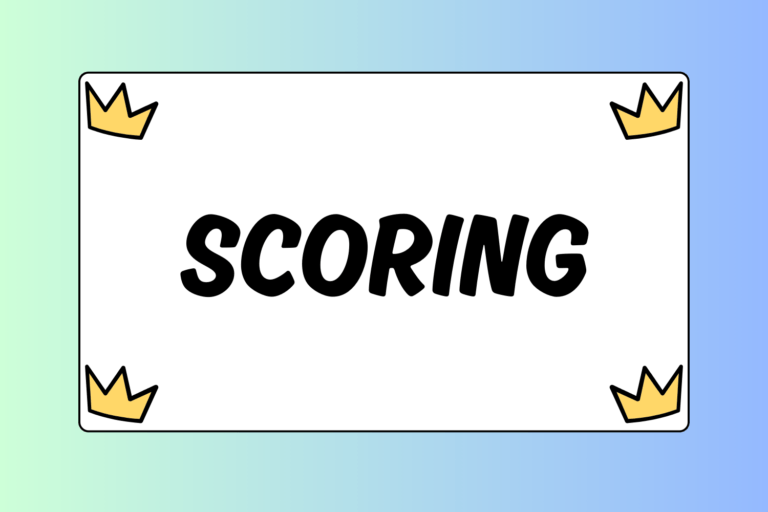There are literally hundreds of wrestling styles practiced worldwide, with rules and match procedures varying greatly from one to another. Among these forms, folkstyle, freestyle, and Greco-Roman have emerged as the ones that are most regularly practiced. While freestyle and Greco-Roman are popular on the international level, folkstyle wrestling has been a traditional style in the United States for centuries. Each form offers unique modes of competition with complex rules that make for an exciting experience for both the wrestlers and the fans.
Freestyle
Overview
Freestyle is arguably the world’s most popular style of wrestling. This is due in large part to rules that have been carefully designed to create scoring possibilities. This fast-paced style is the least restrictive of all of the major styles and allows competitors to execute both upper- and lower-body attacks in order to score on an opponent.
Match Procedure
Each freestyle match is composed of three two-minute periods. At the beginning of these periods the action starts with the wrestlers on their feet in neutral position. Wrestling must take place in the center of the mat, and every time the action moves out of bounds the clock is stopped.
There is a referee, a judge, and a mat chairman who work together in order to score each freestyle bout. Both the referee and judge must evaluate every attempted technique and agree on a final decision for every point scored. In cases where the referee and judge disagree, the mat chairman’s opinion is used as the final decision.
How to Win
There are several different ways to win a freestyle match:
- Out-score an opponent in any two of the three periods that compose a bout. Each individual period is wrestled in its entirety, unless stopped by a fall or technical fall (scoring 6 points or more over an opponent). A winner must be declared at the end of every period, and if one wrestler wins the first two periods consecutively, the third period is withdrawn.
- Pin an opponent’s shoulders to the mat. Also known as a “fall,” this occurs instantly when a wrestler’s shoulders or upper-back touch the mat; this is why it is sometimes known as a “touch fall.”
Scoring in the Neutral Position
Every period starts with the wrestlers in the neutral position, so the takedown is a key element in freestyle competition. One point is earned when one wrestler takes the other to the mat and establishes control.
If the attacking wrestler exposes his opponent’s back to the mat in the process of the takedown, two more points are awarded. A maximum of five points can be awarded for throwing an opponent over one’s head in the process of putting them to their back. This is called a throw of “grand amplitude.”
Stepping Out of Bounds
If a wrestler is pushed out of bounds or attempts to escape a hold by stepping onto the protection zone with at least one foot, the offensive wrestler is awarded a point. Further penalties are assessed for continual violation of this rule.
Scoring in Par Terre
“Par terre” is when the action of the match is on the mat, with one wrestler in the top position and the other in the bottom position. The top wrestler is allowed to lock his hands anywhere on the body in order to turn his opponent to his back. Turning an opponent to their back earns the attacking wrestler two points. If this wrestler holds his opponent on his back for five seconds or more, this will earn him an extra point.
The bottom wrestler’s strategy in par terre is to flatten out and stay solid on the mat in order to keep from being lifted or turned. This wrestler may also try to establish control of the top wrestler, earning him a point if he changes his position from bottom to top.
If there are no points scored in the par terre position by either wrestler after about 10 seconds, the official stops the action on the ground and restarts the wrestlers in the neutral position. This is done to keep the action going and allow both wrestlers more opportunities to score.
Breaking the Tie
If the score is tied at the end of a period, there is very specific tie-breaking criterion that must be followed to determine a winner. The criteria must be applied in the following order, moving on to the next rule when one rule does not apply:
- The wrestler with the least amount of cautions or penalty points against him wins the period.
- The wrestler that scored the highest number of technical points with one offensive maneuver wins the period.
- The wrestler that scores the last point before the end of the period wins.
Leg Clinch
The clinch rule, or “ordered position,” is used to force action and decide the winner of a scoreless period. This position starts with one wrestler standing in the center of the mat, and the other wrestler squatting and taking control of one of his opponent’s legs. The defensive wrestler (standing) is allowed to put his hands on his opponent’s back, but may not block or defend in any other way before wrestling starts. These offensive and defensive positions are chosen at random.
Once the offensive wrestler has taken a leg, this is when wrestling starts. If the offensive wrestler scores in this position wrestling is stopped and this wrestler wins the period. If the attacking wrestler does not score in this position at the end of this 30 second period, the defending wrestler is awarded one point and wins that period of wrestling.
Weight Classes
There are different weights for every age group. However, the following weight categories are contested internationally:
Senior Men (In kilograms) 50-55 kg 60 kg 66 kg 74 kg 96 kg 96-120 kg
Senior Women 44-48 kg 51 kg 55 kg 59 kg 63 kg 67 kg 67-72 kg
Greco-Roman
Overview
This totally upper-body style is practiced all over the world and is highly respected because of its limits in both rules and attacks. The main difference between Greco-Roman and other styles is that it does not allow any use of the legs to attack or defend against an opponent. Using the lower-body in this manner results in a penalty, and awards points to the opposing wrestler. Except for the mandatory “ordered hold” position at the end of each period, scoring and match procedure is almost identical to freestyle.
Match Procedure
Greco matches are composed of three two-minute periods. At the beginning of each period the action starts neutral, with both competitors on their feet. Wrestling must take place in the center of the mat, and every time the action moves out of bounds the clock is stopped. Each period is wrestled until there is 30 seconds left. At that point the action is stopped. The final 30 seconds of the two-minute period is contested with the wrestlers in the par terre position (see description below).
There is a referee, a judge, and a mat chairman that work together in order to score each Greco bout. Both the referee and judge must evaluate every technique or hold and agree on a final decision for every point scored. In cases where the referee and judge disagree, the mat chairman’s opinion is used as the final decision.
How to Win
There are several different ways to win a Greco match:
- Outscore an opponent in any two of the three periods that compose a bout. Each individual period is wrestled in its entirety, unless stopped by a fall or technical fall (gaining 6 points or more over an opponent). A winner must be declared at the end of every period, and if one wrestler wins the first two periods consecutively, the third period is withdrawn.
- Pin an opponent’s shoulders to the mat. Also known as a “fall,” this occurs instantly when a wrestler’s shoulders or upper-back touch the mat; this is why it is sometimes known as a “touch fall.”
Scoring in the Neutral Position
Every period starts with the wrestlers in the neutral position (standing), so the takedown is a key element in Greco competition. One point is earned when one wrestler takes the other to the mat and establishes control.
If the attacking wrestler exposes his opponent’s back to the mat in the process of the takedown, two more points are awarded. A maximum of five points can be awarded for throwing an opponent over one’s head in the process of putting him to his back. This is called a throw of “grand amplitude” and is very common in Greco competition.
Stepping Out of Bounds
If a wrestler is pushed out of bounds or attempts to escape a hold by stepping onto the protection zone with at least one foot, the offensive wrestler is awarded a point. Further penalties are assessed for continual violation of this rule.
Scoring in Par Terre
“Par terre” is when the action of the match is on the mat, with one wrestler in the top position and the other in the bottom position. The top wrestler is allowed to lock his hands anywhere above his opponent’s waist order to turn him to his back. Turning an opponent earns the attacking wrestler two points. If this wrestler holds his opponent on his back for five seconds or more, this will earn them an extra point.
The bottom wrestler’s strategy in par terre is to flatten out and stay solid on the mat in order to keep from being lifted or turned. This wrestler may also try to establish control of the top wrestler, earning him one point if he changes his position from bottom to top.
If there are no points scored in the par terre position by either wrestler after about 10 seconds, the official stops the action on the ground and restarts the wrestlers in the neutral position. This is to keep the action going and allow both wrestlers more opportunities to score.
Clinch Position
In Greco, each period begins neutral and is wrestled until there are 30 seconds left. The final 30 seconds of the period is continued in the par terre position on the mat. This position is called the “ordered hold position” or “clinch,” and is enforced to create more opportunities to score by each wrestler, making the outcome of each match more decisive.
There is very specific tie-breaking criterion that must be followed to determine the wrestler that starts in the top position. If the first criteria cannot be met, the referee moves on to the next one, and so on. In this sequence, the top position is ordered to:
- The wrestler with the highest number of points.
- The wrestler who scored the last point, if the score is tied.
- The wrestler who scored the highest number of technical points with one offensive maneuver, if the score is tied.
- The wrestler wearing red, if none of the above criteria applies.
Once the top and bottom positions are determined, the wrestler ordered to bottom gets set. He must have both hands and knees on the designated starting lines drawn on the mat. The referee is allowed to make adjustments to the bottom wrestler’s position.
The wrestler in the top position is then ordered to “cover” his opponent. He is allowed to start either on the side of or behind his opponent.
- If the top wrestler takes position behind his opponent, wrestling starts once he places both of his hands on his opponent’s back.
- If the top wrestler takes position on the side of his opponent, the action starts once he locks his hands around his opponent’s midsection.
The wrestler that starts on top in this position must turn his opponent during this 30-second period. Otherwise, his opponent is awarded a point. Only a fall can halt the period before the full 30 seconds.
This same process occurs at the end of the second and third periods, as well, with the same criteria being applied. If the first three rules are not relevant to the match, the wrestler in blue is ordered to the top position in the second period. If in a similar situation at the end of the third round, a wrestler is randomly chosen to start on top.
Weight Classes
There are different weights for every age group. However, the following weight categories are contested internationally:
Senior Men (In kilograms) 50-55 kg 60 kg 66 kg 74 kg 96 kg 96-120 kg
Folkstyle
Overview
Folkstyle, also known as collegiate or scholastic style, is most popular in the United States. Many middle schools, high schools and colleges have folkstyle teams. Scoring and match procedure in folkstyle is extremely unique in comparison to the international styles of freestyle and Greco-Roman.
The rules promote action by allowing for a wider range of scoring opportunities on the basis of gaining or losing control. One of the main differences between folkstyle and the international styles is that the top wrestler is not allowed to lock hands around his opponent unless he is attempting a pin.
Match Procedure
A folkstyle match is composed of three periods: The periods in high school wrestling have a duration of two minutes, while college matches have a first period of three minutes, with the two remaining periods at two minutes each.
The first period always starts with both wrestlers standing, in the neutral position. At the beginning of the second period, a coin is flipped and one wrestler is allowed to choose the starting position for that period. The options are neutral, top or bottom. In a show of strategy, the wrestler with choice in the second period can elect to defer his choice to his opponent, in order to get choice at the beginning of the third period.
How to Win
There are several ways to win a match in folkstyle wrestling:
- Pin both of your opponent’s shoulders to the mat. In order to pin an opponent in folkstyle, an opponent’s shoulders must be held for around two to three seconds.
- Outscore your opponent by match’s end. A match may be stopped if a wrestler outscores his opponent by a margin of 15 points or more (Ex. 15-0, 16-1, etc.). This is known as a “technical fall.”
Scoring
Folkstyle matches are scored on the basis of control; either losing it or gaining it over your opponent. Taking an opponent down and gaining control of him earns two points. Escaping the control of your opponent is encouraged and earns one point. Reversing the control of your opponent earns two points.
Holding an opponent on their back in attempt to pin them also earns points; this is known as “nearfall.” When wrestlers are on their back, the referee will start a count. A three-second count by the referee earns two points to the wrestler in controlling position, and a five-second count earns three points.
One key rule that is not included in high school wrestling but is a fundamental part of collegiate competition is the use of “riding” or “advantage time.” This rule grants an extra point at the end of the match to a wrestler for staying on top of an opponent and controlling him for at least one minute.
Sudden Victory and Tiebreaker Periods
If the score is tied at the end of the match, a one-minute “sudden victory” period is set in place. The wrestlers start in the neutral position and the first wrestler to score a point in this period wins the match.
If at the end of the sudden victory period no wrestler has scored, two 30-second tiebreaker periods are wrestled in their entirety. The wrestler that scored the first point in the match gets the choice to start on top or bottom for the first 30-second period; the wrestlers will switch positions for the second period of 30 seconds. The wrestler with the greatest number of points after these two periods wins the match.
If the score is still tied after the sudden-victory and tiebreaker periods, different rules are then enforced at the scholastic and collegiate level to decide the match:
- In collegiate competition, if the score is tied after the one-minute sudden-victory period and the two 30-second tiebreaking periods, the wrestlers begin again in the neutral position for a one-minute sudden-victory period, followed by two more 30-second tiebreaking periods, if needed. This process continues until a winner has been decided.
- In scholastic competition, if the score is still tied after the sudden-victory and tiebreaker periods, one final “ultimate tiebreaker” period of 30 seconds is used. The wrestler that scored the first point in the match may elect to start on top or on bottom in referee’s position. The wrestler on bottom must escape to win the match, while the top wrestler must hold his opponent down in order to achieve victory. The winner of the ultimate tiebreaker period wins the match.
Weights
Collegiate Weights 125 lbs. 133 lbs. 141 lbs. 149 lbs. 157 lbs. 165 lbs. 174 lbs. 184 lbs. 197 lbs. Heavyweight (183-285 lbs.)
Scholastic Weights 106 lbs. 113 lbs. 120 lbs. 126 lbs. 132 lbs. 138 lbs. 145 lbs. 152 lbs. 160 lbs. 170 lbs. 182 lbs. 195 lbs. 220 lbs. 285 lbs.
Freestyle, Greco-Roman and folkstyle wrestling all have very detailed and complex rules that must be followed to ensure fairness to both wrestlers. It takes time and competitive experience to fully understand and interpret these rules. Below are the official rulebooks for each style:
FILA’s current rulebook for freestyle and Greco-Roman.
NCAA’s most current rulebook for folkstyle.





